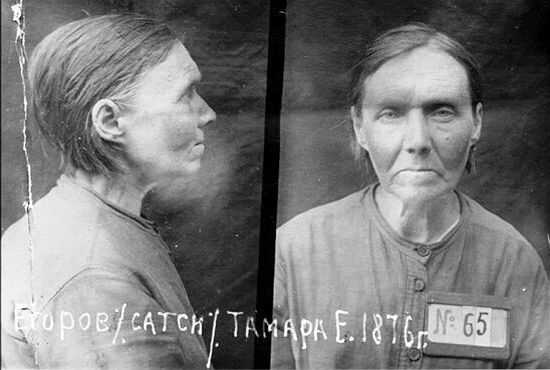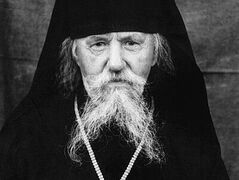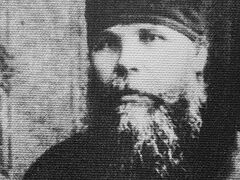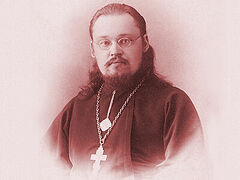In the nineteenth century, the Russian Empire included many lands, including the modern Baltic States, which then consisted of the Estonian, Livonian, and Courland Governorates.
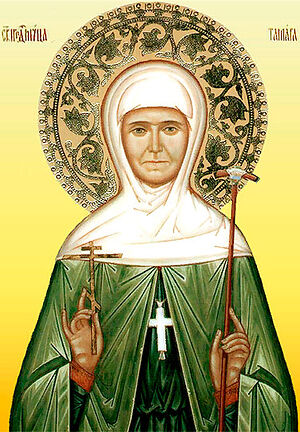 St. Tamara In the late-nineteenth—early-twentieth centuries, Orthodox missionary work began to develop widely in the Estonian Governorate. A huge contribution to the conversion of Estonians (mainly Lutherans and other types of Protestants) to Orthodoxy was made by Bishop Platon (Kulbush) of Revel. From the life of the holy ascetic, we know how difficult this process was. The Protestant and Lutheran communities were close-knit and rich, consisting mainly of wealthy, educated Estonians. Mostly low-income peasant families with a difficult financial situation and a low level of education joined Orthodox parishes.
St. Tamara In the late-nineteenth—early-twentieth centuries, Orthodox missionary work began to develop widely in the Estonian Governorate. A huge contribution to the conversion of Estonians (mainly Lutherans and other types of Protestants) to Orthodoxy was made by Bishop Platon (Kulbush) of Revel. From the life of the holy ascetic, we know how difficult this process was. The Protestant and Lutheran communities were close-knit and rich, consisting mainly of wealthy, educated Estonians. Mostly low-income peasant families with a difficult financial situation and a low level of education joined Orthodox parishes.
It can be assumed that it was in such a poor peasant family that a daughter named Maria was born in 1876. She was left an orphan very early. When she was seven, the Lord took her mother, and her father departed very soon after. We don’t know how little Maria survived in the orphanage that took her in. The fate of an orphan is unenviable; and if the family was poor and the relatives (were there any?) were in relatively the same position, then there’s no reason to believe she had it easy, that she was well-fed and warm.
When Maria was ten, an Orthodox parish opened in the neighboring village, and she wound up there. It was salvation in every sense of the word! Maria finished several classes of the parish school and at the age of twelve she entered the Orthodox home for orphaned girls at the women’s community in Jõhvi. The children were taught the basic subjects as well as needlework an iconography. The orphanage also had a gold embroidery workshop.
In 1892, the Holy Dormition Convent was opened on the basis of the community. Growing up, the children of the orphanage could remain in the monastery if they so desired. So the nineteen-year-old Maria was clothed in a cassock; in the same year she was clothed in an apostolnik, and a year-and-a-half later, she was tonsured into the riassa. A year later, the novice Maria, following the monastery’s Abbess Barbara (Blokhina), moved to another monastery in Kazan. Maria sang on the kliros and worked in the sewing workshop. In 1902, Abbess Barbara was transferred again, and the novice Maria again followed her abbess to the Kozmodemyansk-Holy Trinity Convent, where she sang on the kliros and labored as a clerk. Mother Barbara managed well both the monastery and the Cheboksary women’s community that belonged to the monastery.
In 1915, Mother Barbara died. Her life doesn’t say how the novice Maria endured this loss. Having lost her parents at a young age, she followed Mother Barbara wherever the Lord sent her. It’s obvious that in the person of Mother Barbara, Maria found a mentor, a spiritual support, a captain on the sea of life. She was with the abbess for twenty years. And no matter how much she cut off all worldly things, the departure of Mother Barbara was a great loss for Maria.
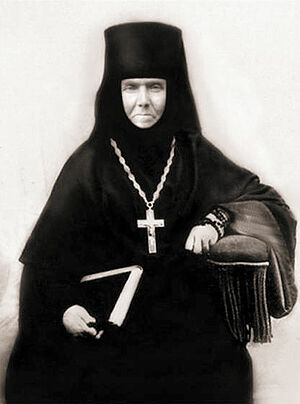 Abbess Tamara (Satsi) Two years later, on July 19, 1917, the novice Maria took monastic vows and was given the name Tamara. Her tonsure was served by Archimandrite Sergei (Zaitsev), abbot of the Holy Dormition-Zilantov Monastery in Kazan, the dean of monasteries of the Kazan Diocese.
Abbess Tamara (Satsi) Two years later, on July 19, 1917, the novice Maria took monastic vows and was given the name Tamara. Her tonsure was served by Archimandrite Sergei (Zaitsev), abbot of the Holy Dormition-Zilantov Monastery in Kazan, the dean of monasteries of the Kazan Diocese.
And after another four months, the Russian Empire ceased to exist following the October Revolution. In September 1918, Archimandrite Sergei and his brethren were shot. Then Fr. Sergei’s monastery unexpectedly wound up at the center of military operations, being on high ground. The military units, clergy, and citizens left Kazan, but the eleven soldiers of Christ wouldn’t budge. They went to serve the last Liturgy in their lives. Having entered the city, the Bolsheviks shot them at the wall of the monastery courtyard. When the executioners left, the elderly Hieromonk Joseph climbed out from under the lifeless bodies of his brethren. He told about the martyrdom of the ascetics. All ten who were executed, led by Archimandrite Sergei, were canonized, with their feast celebrated on September 10.
Meanwhile, Mother Tamara was appointed treasurer of the Cheboksary Convent, which was once led by Abbess Barbara. In 1920, Mother Tamara became the acting head of the community. At the same time, the authorities decided to liquidate the community. They confiscated all the property, including real estate. The sisters were left with a church and a small wooden outbuilding to live in. Through the enormous efforts of Mother Tamara and the sisters, they managed to defend the monastery, but alas, only temporarily.
In 1924, the community was transformed into a monastery, and Mother Tamara was appointed abbess and elevated to the rank of igumena.
In 1926, by decision of the authorities, the monastery was closed, but the sisters remained and the monastery existed in the status of a religious community. Complaints and slanders to the NKVD, court proceedings, denunciations and more denunciations—the monastery existed in such conditions until 1930 when the authorities closed the church and seized the last buildings where the nuns were huddled together. In fact, they were simply kicked out onto the street, with nowhere to go.
Mother Tamara was taken in by a friend, and the ascetic continued her spiritual labors of much prayer and reading the Holy Scripture. She also managed to work on the farm, like a simple peasant woman. Mother Tamara spent eleven years in labor and prayerful ascesis.
One fine May day in 1941, the abbess was taking the cows out to pasture. Someone approached her and introduced himself as a priest. They didn’t really chat or get to know one another. They only exchanged a few words. They talked about the Philokalia. That’s it. How was Mother Tamara to know that this “priest” was a Judas who had given up his holy orders and renounced God as a traitor. A month later, on June 22, 1941, the Second World War began. And three days later, they came for Mother Tamara…
The house was searched and Mother Tamara was arrested and put in Cheboksary Prison. She was interrogated four times. They were intended to confirm the testimony of the “priest.” As a rule, such statements were written by the investigator, and the “on duty” witness only signed the document, often even without reading it. Nothing of what the traitor “told” the investigation was actually said in the insignificant conversation that took place between Mother Tamar and this Judas. But no one was interested in the truth. The charges were standard for that time: anti-Soviet agitation, espionage. The ascetic rejected all the accusations. She behaved courageously, with dignity. Asked what prompted her to join a monastery, she replied: “Nothing forced me to go to the monastery—I went of my own free will to save my soul.”
There was also a face-to-face meeting with the “priest,” but the traitor’s conscience didn’t awaken. Mother Tamara didn’t flinch, but again rejected all the charges.
Mother Tamara was convicted under Article 58, paragraph 10 of the Criminal Code of the USSR and sentenced to ten years in a camp. Such a sentence could be compared to the death penalty, only death came slowly, painfully, terribly, from disease, backbreaking work, and the inhuman conditions of detention. It was very rare for those sentenced to ten years to ever be released. There was another feature of daily camp life in those times: During the war, they stopped feeding those convicts who couldn’t work full strength, and people were dying from hunger.
At the time of sentencing, Mother Tamara was sixty-five. She was sent to work at a sawmill. She survived the winter, but she didn’t have enough strength to live longer.
The documents about Mother Tamara say the cause of her death was a heart defect. Only the Lord knows the truth and the true cause of her martyric end. Christ took the ascetic to His bright habitations at a time when the whole Church, Heavenly and earthly, was exultantly glorifying the Risen Lord—on Friday of the fourth week after Pascha, May 1, 1942.

